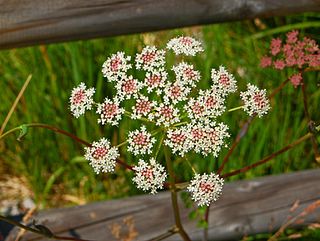Related Research Articles

Tineidae is a family of moths in the order Lepidoptera described by Pierre André Latreille in 1810. Collectively, they are known as fungus moths or tineid moths. The family contains considerably more than 3,000 species in more than 300 genera. Most of the tineid moths are small or medium-sized, with wings held roofwise over the body when at rest. They are particularly common in the Palaearctic, but many occur elsewhere, and some are found very widely as introduced species.

Monopis imella is a moth of the family Tineidae found in Europe.

Tinea pellionella, the case-bearing clothes moth, is a species of tineoid moth in the family Tineidae, the fungus moths. It is the type species of the genus Tinea, which in turn is the type genus of the subfamily, family, as well as the superfamily Tineoidea. Its scientific name is derived from "tinea", a generic term for micromoths, and the Latin term for a furrier, pellionellus. Another common name is "bagworm" due to the case that their larvae carry around, but not to be confused with the Psychidae that are also called "bagworms" in English.

Desmoxytes, whose species are commonly known as the dragon millipedes, is a genus of millipede of the family Paradoxosomatidae found in southeast Asia. The genus was described by Ralph Vary Chamberlin in 1923 and reviewed by Sergei Golovatch and Henrik Enghoff in 1994. At least twenty-nine species are known from southeastern China to Myanmar, Thailand, and Vietnam. One species, D. planata, has also been observed in Sri Lanka, the Andaman Islands, Seychelles, Java, Great Coco Island, and Fiji; however, this species has expanded its range by being transported through human activity. Several species have only recently been discovered and some have yet to be officially described.

Erechthias is a genus of the fungus moth family, Tineidae. Therein, it belongs to the subfamily Erechthiinae, of which it is the type genus. The exact circumscription of this genus is still disputed, but it may encompass more than 150 species.
Cimitra is a genus of moths belonging to the family of Tineidae. Most species of this genus are found in Africa but Cimitra sechusella Walker, 1864 is found in Southeast Asia.

Opogona is a genus of the fungus moth family, Tineidae. Therein, it belongs to the subfamily Hieroxestinae. As it includes Opogona omoscopa, the type species of the now-abolished genus Hieroxestis, it is the type genus of its subfamily.

Agnathosia is a genus of moths belonging to the family Tineidae.
Bathroxena is a genus of moths belonging to the family Tineidae.
Tineovertex is a genus of moths belonging to the family Tineidae.

Nemapogon is a genus of the fungus moth family, Tineidae. Therein, it belongs to the subfamily Nemapogoninae. As evident by its name, it is the type genus of its subfamily.

Nemaxera is a genus of the fungus moth family, Tineidae. Therein, it belongs to the subfamily Nemapogoninae. The genus is considered monotypic, with the single species Nemaxera betulinella placed here.
Kangerosithyris is a genus of moths belonging to the family Tineidae.
Tineomigma is a genus of moths belonging to the family Tineidae.
Apreta is a moth genus, belonging to the family Tineidae. It contains only one species, Apreta paradoxella, which is found in California.
Graphidivalva is a genus of moths belonging to the family Tineidae. It contains only one species, Graphidivalva genitalis, which is found in South Africa.

Tinea is a genus of the fungus moth family, Tineidae. Therein, it belongs to the subfamily Tineinae. As evident by its name, it is the type genus of its subfamily and family. Established as one of the first subgroups of "Phalaena", it used to contain many species of Tineidae that are nowadays placed in other genera, as well as a few moths nowadays placed elsewhere.
Praeacedes is a monotypic moth genus in the family Tineidae first described by Hans Georg Amsel in 1954. Its only species, Praeacedes atomosella, was first described by Francis Walker in 1863. It has a wide range and has been recorded from Europe, Australia, Hawaii, India, Malaysia, Solomon Islands, Easter Island, Mauritius, Madagascar, Réunion, South America and North America. The species has commonly been misidentified in various parts of the world.

Peucedanum cervaria is a herbaceous plant in the genus Peucedanum belonging to the carrot family Apiaceae.
Sphecioses is a genus of moths belonging to the family Tineidae. It contains only one species, Sphecioses acignathus, which is found in Venezuela.
References
| Wikispecies has information related to Cervaria . |